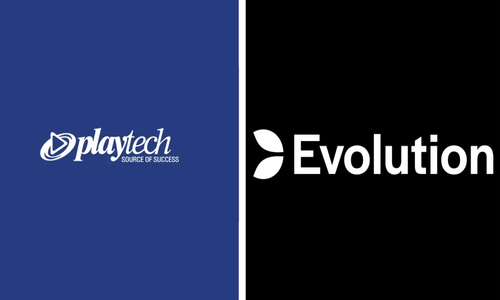The TriLux side bet in blackjack attempts to make simple 3-card poker hands by combining the player’s first two cards and the dealer’s upcard.
To win the bet, the three relevant cards have to form one of these poker hands:
- Flush: Three cards of the same suit, not in consecutive order. For example, a 2, a 7, and a King of Spades.
- Straight: Three cards of different suits whose ranks are in consecutive order. For example, a 5 of Clubs, 6 of Hearts, and 7 of Spades.
- Three of Kind: Three cards of the same rank, regardless of their suit. For example, a King of Hearts, a King of Clubs, and a King of Diamonds.
- Straight Flush: Three cards of the same suit whose ranks are in consecutive order. For example, a 5, 6, and 7 of Spades.
The basic version of the TriLux bet pays 8:1 for any winning hand, which is the main difference between TriLux and the 21+3 side bet. However, some variants of TriLux also pay different payouts for different winning hands.
Beyond that, the rules of this bet are very simple:
- Players can choose to place a TriLux side bet before the beginning of any round of blackjack that offers this wager.
- The player must have an active main bet in order to place the TriLux side bet.
- The bet is resolved immediately after the initial deal. The player’s hole cards and the dealer’s upcard are examined as soon as their visible.
- If the bet wins, the payout is immediately handed to the player mid-round, as per the paytable for that specific table.

NOTE: Some versions of the TriLux bet also feature a Lucky George rule, which pays a fixed fee to the dealer every time the player wins.
TriLux Paytables
The payouts offered by the TriLux bet vary from table to table. There are 5 common types of paytables we’ve come across, each with its own pay rates and house edge.
We’ll go through each common TriLux paytable and list its payouts, probabilities, and overall RTP rate. We’ll also highlight the key differences and characteristics of each variant.
Paytable 1 (Fixed Payouts, No Progressive)
The basic, original version of TriLux pays 8:1 across the board, regardless of the winning hand. It also features a fixed $1 Lucky George for all winning outcomes.
Although marked with a high house edge, this version of TriLux is by far the most common and readily accessible in most casinos. It also offers fairly consistent returns and less volatility than most other variants, which has value for certain strategies.
Paytable 2 (Scaled Payouts, No Progressive)
This version of the TriLux side bet offers varying payouts for different winning outcomes, ranging from 5:1 for a Flush to 25:1 for a Straight Flush. The Lucky George fee is similarly scaled based on outcomes, ranging from $1 for a Flush win to $10 for a Straight Flush win.
This means that this version of the bet is fundamentally identical to 21+3, but with worse payouts and an additional Lucky George fee slapped on top. In other words, it’s a strictly (much) worse version of 21+3, so we recommend avoiding it.
Paytable 3 (Scaled Payouts, No Progressive)
This version of the TriLux bet similarly offers varying payouts for different winning outcomes, ranging from 5:1 for a Flush to 25:1 for a Straight Flush. It also employs a Lucky George rule with varying fees.
This variant is basically identical to Version 2, except that it offers a 10:1 payout for Three of a Kind hands.
The increased payouts mean that this version is strictly better than Version 2. However, it’s also much, much worse than a 21+3 bet or a main blackjack bet, which is why it’s best avoided by most players.
Version 4 (Scaled Payouts, Mini Royale, No Progressive)
The next version of TriLux has varying payouts, but they’re higher across the board, resulting in a severely lower house edge. It also does not have any Lucky George rules.
This version also introduces a special, higher payout for a Mini Royal hand.
A Mini Royal is a three-card version of the Flush Royale: it consists of an Ace, King, and Queen of the same suit.
This version of TriLux is decidedly superior to most others thanks to its noticeably lower house edge. This is especially true due to the lack of a Lucky George fee, though the bump up to Three of a Kind and Straight Flush returns helps a lot as well.
However, a house edge of 4.41% is still relatively poor, especially compared to the 0.5-1% house edge of the main blackjack bet.
Paytable 5 (Fixed Payouts, No Progressive, No Lucky George)
The final version of TriLux pays 9:1 for all winning hands and features no Lucky George fee.
This variant boasts the lowest house edge thanks to its comparatively high fixed payout and lack of Lucky George bonus. It’s also closer to the original because it pays a fixed 9:1 for all winning outcomes, which makes it distinct from 21+3.
However, Variant 5 is also by far the least common, and it’s only available in certain brick-and-mortar venues.
Odds & House Edge (Explained)
Unlike the main game of blackjack, the TriLux side bet is completely based on luck. The player does not make any decisions that can impact the outcome of the bet – you just place the wager and hope for the best.
As such, the house edge of every TriLux bet is fixed, ranging from 2.75% to 23.25% depending on the paytable being used. You cannot directly reduce this edge, and you certainly cannot overcome it.
However, it’s also important to note that the exact expected value of a TriLux bet varies slightly based on a few in-game factors:
- Paytables: A bet’s house edge represents its ratio of risk vs. reward. As such, tables that offer higher payouts for the same outcomes have a lower house edge.
- Deck count: The number of decks in the shoe also impacts the RTP of TriLux, and blackjack as a whole. Broadly speaking, 8-deck games have a lower house edge than 6-deck variants (in contrast to the main bet, which has a lower house edge with fewer decks). However, most TriLux tables we’ve encountered use 6 decks, which is why the figures in our guide all relate to 6-deck tables. Also, the difference is generally quite small and doesn’t do much to alleviate this wager’s fundamentally low RTP.
- Running count: the current count of the shoe (which cards have been played through, and which are still in the shoe) also impacts the bet’s house edge. However, the exact value of every card is not as clear as with the main bet – low cards are just as likely to form a Flush as high cards. As such, the TriLux side bet is not very countable, and the count’s impact on the house edge is almost negligible.
- Stake size: the Lucky George rule in TriLux is a flat fee – it’s the same amount, regardless of the size of your stake. As such, it’s less impactful for higher stake bets in terms of RTP. For example, if you win $100 and pay a $1 Lucky George, you only lose 1% of your winnings. However, if you win $10, you lose 10% by paying the same fee. Of course, this factor does not apply to variants with no Lucky George, such as versions 4 and 5. Either way, we recommend picking the size of your stake based on your budget and money management plan, not to try and decrease the house edge of a bet whose edge is essentially unbeatable.
The table below compares the five common types of TriLux blackjack bets and ranks them based on house edge, going from lowest to highest.
Again, these figures assume that the game is using a freshly shuffled shoe of 6 decks.
Key Takeaways
- Most TriLux bets on blackjack tables have a horrifically high house edge that goes into the double digits; the rare “good” tables (e.g., Versions 4 and 5) are still much worse than the main bet and slightly worse than the more common 21+3 bet.
- Factors such as more decks per shoe can decrease the house edge of TriLux, but not by much. The casino’s advantage is so high that it’s next to impossible to make this bet worthwhile.
- Progressive features such as jackpots can further increase the house advantage, offering potentially massive payouts in return. Although the exact HE for progressive jackpots varies based on the size of the pot, the figures still tend to be much worse than in base, non-progressive TriLux bets.
TriLux Progressive, Super 3 & Other Variants
TriLux blackjack also appears in several additional variants with extra rules and features.
TriLux Progressive / Jackpot
The TriLux side bet is often paired with progressive features. If you’re unfamiliar with the term, ‘progressive’ simply means that the bet features a jackpot. A portion of every bet made by every player goes into a single pot, which can then be won using the same bet.
In most progressive TriLux games, the jackpot goes to the first person to hit a Mini Royal in a specific card suit and a specific order. For example, if you win the TriLux bet by drawing an Ace and King of Spades as your initial cards and a Queen of Spades as the dealer’s upcard, you win the whole bet.

Drawing a Mini Royal is fairly unlikely (~0.02%), but the chances of drawing one in a particular suit and a particular order are astronomically small. That’s why TriLux jackpots sometimes reach hundreds of thousands in prize pools.
Most progressive versions also have smaller jackpot wins that are often awarded for more likely outcomes. For example, drawing a Mini Royal in the right order but not the right suit might secure you 10% of the current pot.
Here is an example paytable for a progressive TriLux bet. Note that the paytable may vary depending on the venue.
Due to the mechanics of jackpots, progressive TriLux versions have a much higher volatility than the base versions.
Broadly speaking, they also have a higher house edge. This house edge technically decreases as the pot grows. However, the base level advantage is so big that overcoming it simply by waiting for the pot to grow large enough is next to impossible. Think of it this way: by the time the pot grows enough to make the bet statistically viable, someone will have probably snagged it.
Super 3
The Super 3 is a side bet that acts as a sort of additional side bet for the TriLux bet. It offers massive payouts for specific TriLux-winning outcomes, but only for the least likely ones.
To place a Super 3 bet, you have to already have an active TriLux bet. If the Super 3 bet wins, the TriLux bet wins as well, and both pay according to their paytables.
Here is an example paytable of a Super 3 side bet in TriLux blackjack.
The Super 3 bet is simply a way to make TriLux more volatile by increasing the stakes while offering higher payouts for highly unlikely outcomes. However, it has a house edge of 9.98%, which makes it a poor option in most situations despite the attractive potential rewards.
Bust Bonanza
Bust Bonanza is an additional side bet found on some TriLux tables. Although it’s typically bundled under TriLux branding, it’s a separate side bet that can win, lose, or exist without the TriLux side wager. On non-TriLux tables, this side bet is sometimes simply called the Bust Bonus.
The Bust Bonanza side bet is placed after the initial deal. After seeing their hole cards and the dealer’s up card, players can predict that the Dealer will bust by going over 21. The dealer will peek for blackjack before allowing players to place the wager.
The payouts for this wager depend on the dealer’s cards. The less likely the dealer is to go bust based on their up-card, the bigger the payout. These payouts are substantially increased if the dealer’s cards are of the same suit, and an extra bonus is paid if the dealer’s hand consists of exactly three 8s.
Importantly, the house edge of this bet depends on the dealer’s up card at the moment you place it. The paytable below showcases payouts for the Bust Bonanza bet, as well as win probabilities and the house edge for placing the bet based on the dealer’s upcard.
The figures on the table assume a fresh shoe with 6 decks and Dealer Stands on Soft 17 rules.
TriLux vs Blackjack (and vs 21+3)
All of the figures and statistics of TriLux bets in blackjack are only relevant in reference to the main bet. Additionally, the 21+3 side bet is an easy comparison because it’s almost identical to TriLux.
With that in mind, here are some important considerations about TriLux based on its relationship to the main blackjack bet and 21+3 side bet:
vs. Main Bet
As a side bet, TriLux has no impact on your main game decisions or basic strategy.
Players should stick to blackjack strategy charts if they want to maximise their odds in blackjack, regardless of whether they’ve placed a TriLux bet or not.
From a strategic perspective, you should never make TriLux bets (or any other side bet, for that matter) due to their high house edge and reliance on chance.
For comparison, the main bet has a house edge between 0.50% and 1%, depending on the table rules and assuming you’re playing using basic strategy. Most TriLux variants have a house edge in the double digits. This makes them a poor choice by any standard, let alone when compared to blackjack, which enjoys some of the lowest house advantage margins in gambling as a whole.
vs. 21+3
The TriLux side bet is mechanically almost identical to 21+3, which also attempts to make 3-card poker hands using the player’s hole cards and the dealer’s upcard.
The key difference is that all 21+3 versions pay varied rewards for different winning hands. This is not necessarily true for TriLux, which sometimes pays a fixed 8:1 or 9:1 payout for all winning hands.
Another key difference is the presence of Lucky George rules, which sometimes appear in TriLix but never in 21+3.
Ultimately, though, 21+3 is a lot more common. It tends to offer higher payouts across the board, which means it has a notably lower house edge. Many common versions of 21+3 have an RTP rate of 96.30%, which makes them better than any TriLux variant on the market.
Although 21+3 can also offer lower rewards and thus a lower RTP, it’s widely available in many live dealer blackjack games. In contrast, TriLux is largely only available in brick-and-mortar venues at specific branded tables.
Here is an example of a typical 21+3 paytable that illustrates its differences from TriLux.
We’ll also highlight the key differences below:
Bankroll & Strategy (What the Math Says)
The math is pretty unambiguous about the TriLux bet: don’t play it.
All jokes aside, this wager shows a massive house edge that cannot be understated. It’s not only worse than the main blackjack bet – it’s worse than roulette, baccarat, casino poker, the vast majority of slot machines, and even most sports bets.
Crucially, there is no skill component that can improve TriLux outcomes. Blackjack is countable largely because cards of a higher value in blackjack are better for the player: the more high-ranking cards are in the shoe, the higher the player’s chance to win. Since most cards are equally useful for the TriLux bet, the effect of the card count is almost imperceptible, and certainly not helpful.
If you’re absolutely adamant about trying out TriLux, you should only do so if you stumble across a table offering paytables 4 or 5. All other variants have massive double-digit house advantage rates that make them a very poor choice in any circumstance.
Of course, gambling is not just about optimizing odds – it’s about entertainment. If you know what you’re getting into and still want to give it a try, feel free to make a TriLux bet every now and then. Just be aware that doing so is a poor decision from a strategic standpoint, and it’s going to negatively affect your bankroll – especially if you make repeated TriLux bets.
This goes double for progressive TriLux variants. Chasing big jackpots can be quite the thrill, but progressive bets tend to have even higher HE than their non-progressive counterparts. Make sure to familiarise yourself with the seed, cap, and overall rules of the progressive feature, and control your spending to limit your exposure to the bet’s high-risk factor.









































 Roulette
Roulette
 Blackjack
Blackjack
 Baccarat
Baccarat
 Poker
Poker
 Sic Bo
Sic Bo
 Dragon Tiger
Dragon Tiger
 Game Shows
Game Shows  Top 5 Games
Top 5 Games  See more
See more  Roulette Casinos
Roulette Casinos  Low Limit
Low Limit  High Limit / VIP
High Limit / VIP  Exclusive
Exclusive  How to Play
How to Play  Basic Strategy
Basic Strategy  Top Tips
Top Tips  FAQ
FAQ  Blackjack Casinos
Blackjack Casinos  Baccarat Casinos
Baccarat Casinos  Bonuses
Bonuses  Poker Casinos
Poker Casinos  Game Providers
Game Providers  Sic Bo Casinos
Sic Bo Casinos  Dragon Tiger Casinos
Dragon Tiger Casinos  Credit and Debit Card
Credit and Debit Card  e-Wallet
e-Wallet  Cryptocurrency
Cryptocurrency  Bank and Checks
Bank and Checks  Pay by Phone and SMS
Pay by Phone and SMS  See more
See more  How-To Guides
How-To Guides  Top Lists
Top Lists  In-Depth
In-Depth  Strategy
Strategy  Casino & Games
Casino & Games  Insight
Insight  News
News  Promotions
Promotions 
 Guide to Live Casinos
Guide to Live Casinos  Top 10 Live Casino Tips
Top 10 Live Casino Tips  Studio Locations
Studio Locations  FAQ & Help
FAQ & Help  Meet The Dealers
Meet The Dealers  Our Awards
Our Awards  How We Rate
How We Rate  Responsible Gambling
Responsible Gambling 




























 ENG
ENG 












 Facebook
Facebook
 Pinterest
Pinterest
 Twitter
Twitter
 LinkedIn
LinkedIn
 Copy Link
Copy Link 



















